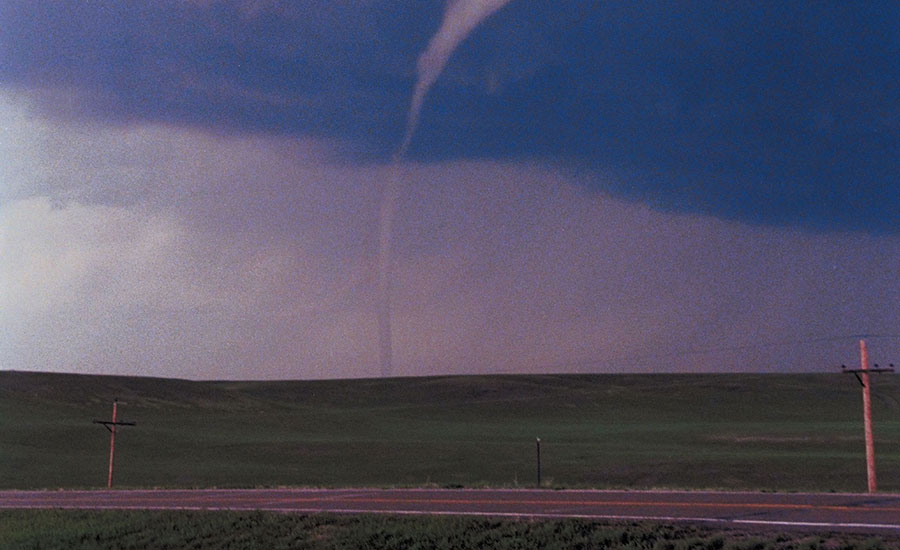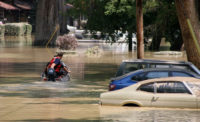The US has made progress in preparing for disasters and other large-scale emergencies that pose risks to health and well-being, although gaps remain in some key areas.
That is according to the 2016 National Health Security Preparedness Index from the Robert Wood Johnson Foundation. The index tracks the nation's progress in preparing for, responding to, and recovering from disasters and other emergencies at both a state and national level. It uses more than 100 different measures, from influenza vaccination rates to hazard planning for public schools, to get a composite score that "reflects the most comprehensive picture of health security preparedness available."
The 2017 index gives the United States a score of 6.7 on a 10-point scale for preparedness, which is a 1.8% improvement from 2015 and a 3.6% improvement from 2013, the year the index began.
The nation's greatest strength in preparedness lies in incident command, the ability to follow a standardized approach in managing the response to emergency events. "These results reflect years of national focus on training government agencies, health professionals and community leaders in the incident command process and in practicing these skills regularly through exercises, drills and real events," an executive summary notes. This domain reached 8.4% in 2015, which is significantly higher than any other domain in the index, the report shows.
The largest gains in preparedness occurred in an area of persistent weakness for the United States as a whole: that of community planning and engagement, which measures how communities mobilize different stakeholders to work together during times of crisis. Results of the 2016 index show preparedness in this area had improved 8.4% by 2015.
However, the United States seems to be losing ground on its ability to monitor for environmental hazards and maintain the security and safety of water and food supplies. Preparedness levels for environmental and occupational health dipped 4.5% between 2013 and 2015. "These losses pose challenges for the nation in detecting and responding to environmental risks on a timely basis, as exemplified by events like the recent water contamination crises in Michigan and West Virginia," the summary notes.
Other study findings:
-
Health security surveillance, or the ability to collect and analyze data to identify possible threats before they arise, scored 7.5, an improvement of 7.1% since 2013.
-
Countermeasure management, or the ability to mitigate harm from biologic, chemical, or nuclear agents, scored 7.0, an improvement of 6.1% since 2013.
-
Healthcare delivery, which includes the state of healthcare systems during everyday life, as well as in emergency situations, scored 5.1, a decline of 1.9% since 2013, but flat compared with last year, according to the report.
The 2016 index also found regional gaps in preparedness. A total of 18 states achieved preparedness levels that far exceeded the national average in 2015, with many of these top-performing states located along the Eastern seaboard or clustered in the Upper Midwest and Southwestern United States. Maryland achieved the nation's highest overall preparedness level in 2015, at 7.6, which is 14% higher than the national average.
However, 16 states lagged far below the national preparedness level in 2015, including clusters of states in the Deep South and Mountain West regions. "Some states with comparatively low levels of preparedness are located in geographic regions that face elevated risks of disasters, indicating a need for focused improvements in high-risk and low-resource areas," the report notes.
"Most states are moving in the right direction, with preparedness levels trending upward for all but 4 states in the Index results from 2013 to 2015. Most of these improvements were relatively modest," the report notes.
The index also found that laboratory testing capabilities relevant to Zika virus have trended upward but are not universally available across the country, and laboratory testing capabilities relevant to drinking water have trended downward, as did fully compliant public drinking water systems.
"In order to keep Americans safe, we need to know how well equipped every state in the nation is to prevent and manage widespread health emergencies," said Risa Lavizzo-Mourey, MD, president and chief executive officer of the Robert Wood Johnson Foundation. "Every sector needs a yardstick to clearly show where progress is being made and where improvement can occur. America's health security is no exception."
"State and local public health agencies are on the front lines in responding to public health emergencies," added Stephen Redd, MD, director of the Centers for Disease Control and Prevention Office of Public Health Preparedness and Response. "The Index is a tool that can help us all see where investments since 2001 to build public health emergency response capacity have paid off and where more investment and work is needed."


